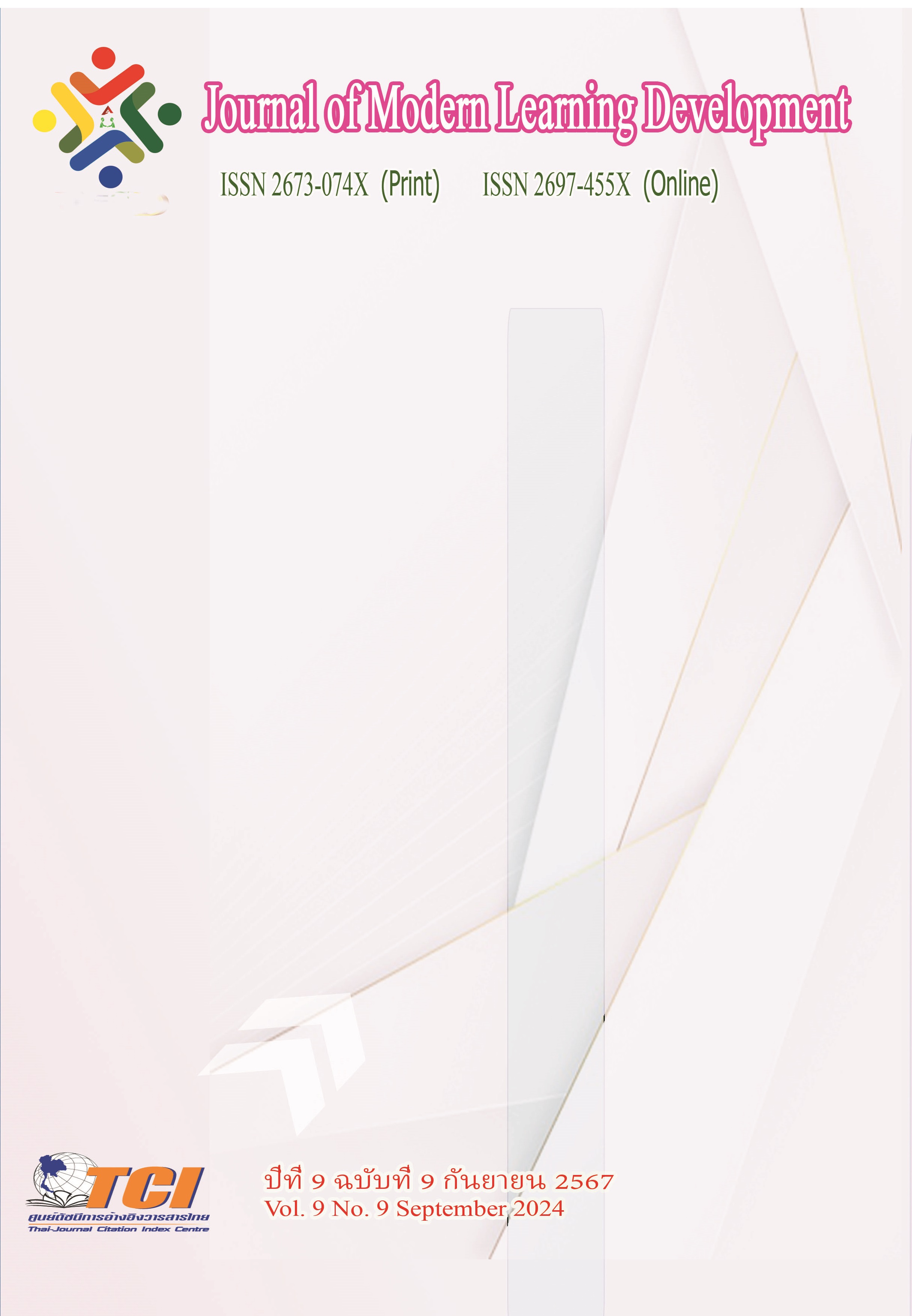Professional Managementt Guidelines of Art Teachers in Public Middle Schools Under Liaoning Province
Main Article Content
Abstract
The objectives of this research were: (1) to study the components of professional management development of art teachers in public middle school under Liaoning Province. (2) to formulate the professional management development guideline of art teachers in public middle school under Liaoning Province.
This research adopted the method of combining qualitative research and quantitative research. Population was arts teachers in public middle school under Liaoning Province, totaling 1,083 people. The sample were 313 administrators and teachers determined by Krejcie and Morgan's Table and obtained by stratified random sampling method. The instruments used for data collection were semi-structured interview form, five-point rating scale questionnaires and Focus Group Discussion form. The response rate of questionnaires was 100%. Statistics used for data analysis included frequency, percentage, mean, standard deviation, Exploratory Factor Analysis, and content analysis was employed.
The results findings that: (1) the components of professional management development of art teachers in public middle school under Liaoning Province includes seven components, consisted of classroom, leading, organization and management, the school construction, teachers ability, psychological quality, rules and regulations; and (2) There were 32 guideline for improving the professional management guidelines of art teachers in public middle schools in Liaoning Province.
Article Details
References
John Ceri. (2020). Translation by Liu Hongtao and Xie Jiangnan.What is the use of art? [M]. Nanjing: Phoenix Publishing and Media Group.
Luo Dafa. (2015). Knowledge and Confirmation-Introduction to Contemporary. Theory of Knowledge [M]. Shanghai: Shanghai People's Publishing House.
Li Guangwu. (2016). Human Resource Development Based on Competency Model. Advances in Psychological Science.
Kang Wandong. (2015). Quality education theory in primary and secondary schools [M]. Beijing: China Archives Publishing House.
Mu Ling Zhenyi. (2019). Suzuki town one education Law [M]. Beijing: Petroleum Industry Press.
Ma Yaju. (2015). On the Construction of school art Education Management System.
Ni Dan. (2019). How to develop the rural junior middle school art community in the crevice [J]. Middle school curriculum resources.
Nie Zhengbin. (2020). Philosophy of art and art education [M]. Beijing. Peking University Press.
Peng Jixiang. (2015). An Introduction to the Art Science [M]. Beijing: Peking University Press.
Qian Chuxi. (2017). Art education to meet the challenge of visual culture [M]. Shanghai: East China Normal University Press.
Song Tingwei. (2018). The value and influence of the artistic quality evaluation of primary and middle school students [J]. Beauty and the times (middle).
Tan Weizhi. (2014). Student community life: a new vision of learning [M]. Shandong: Shandong Education Press.
Tang Yubo. (2019). Chinese art education in the perspective of globalization [M]. Chengdu: Sichuan Literature and Art Publishing House.
Wu Zhihong. (2016). Educational Management Science [M]. The People's Education Press.
Wang Zhenqin and Wang Yongge. (2023). Some thoughts on strengthening art Education [J].
Xun Hongmei. (2023). Research on the implementation status of art curriculum in primary and secondary schools [D]. Northeast Normal University.
Yan Beini. (2015). Talent Evaluation Method: Building Superior. Performance models [M]. Wei Meijin, trans. Shantou: Shantou University Press.
Yu Zhengmin. (2019). Focus on rural art education [M]. Heilongjiang: Heilongjiang Education Press.
Zhang Baodan. (2019). Analysis on the infiltration of moral education in the work of the new class reform [J]. Hua Zhang.
Zhang Yuxiao.(2017). Review paper:Competencies and competency model. SIES. Journal of management.


